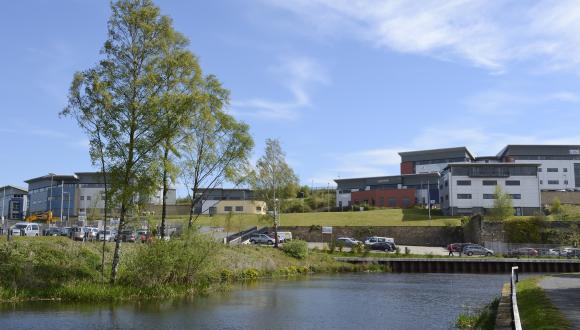
Planning and development: Enhancing biodiversity
Planners and developers have a big part to play in helping to protect and enhance Scotland’s biodiversity
Scotland’s planning system and development have an important contribution to make towards addressing the global biodiversity crisis. This is reflected in the Fourth National Planning Framework (NPF4), which sets out new requirements for development to deliver positive effects, primarily under Policy 3.
This states that all development will contribute to the enhancement of biodiversity, including where relevant restoring degraded habitats.
For national or major developments, or those subject to Environmental Impact Assessment (EIA), Policy 3b notes that these proposals will only be supported where it can be demonstrated that they will conserve, restore and enhance biodiversity, including nature networks, so they are in a demonstrably better state than without intervention. The policy requires that such proposals demonstrate significant biodiversity enhancement, in addition to any proposed mitigation. Only when actions result in biodiversity being left in a better state than before development are positive effects secured.
Proposals for local development will include appropriate measures to conserve, restore and enhance biodiversity in accordance with national and local guidance.
How development can enhance biodiversity
The Scottish Government published Draft Planning Guidance on Biodiversity (November 2023) to clarify understanding of NPF4 Policy 3. Although labelled as “Draft Guidance” it is intended that it should be used now to assist in implementation and delivery of Policy 3.
Section 3 of the draft guidance sets out a number of core principles to help secure biodiversity enhancement and other wider policy objectives. These are applicable to development of all types and scale. The principles are:
- Apply the mitigation hierarchy [as defined in the glossary of NPF4]
- Consider biodiversity from the outset
- Provide synergies and connectivity for nature
- Integrate nature to deliver multiple benefits
- Prioritise on-site enhancement before off-site delivery
- Take a place-based and inclusive approach
- Ensure long term enhancement is secured
- Additionality
For national, major and EIA developments NPF4 Policy 3b requires applicants to demonstrate that biodiversity will be in the “demonstrably better state” required by Policy 3(b) and that the five criteria of Policy 3(b) have been met. These criteria are:
- “the proposal is based on an understanding of the existing characteristics of the site and its local, regional and national ecological context prior to development, including the presence of any irreplaceable habitats;
- wherever feasible, nature-based solutions have been integrated and made best use of;
- an assessment of potential negative effects which should be fully mitigated in line with the mitigation hierarchy prior to identifying enhancements;
- significant biodiversity enhancements are provided, in addition to any proposed mitigation. This should include nature networks, linking to and strengthening habitat connectivity within and beyond the development, secured within a reasonable timescale and with reasonable certainty. Management arrangements for their long-term retention and monitoring should be included, wherever appropriate; and
- local community benefits of the biodiversity and/or nature networks have been considered.”
It will be for the decision maker to determine whether these criteria have been met.
We advise that:
- Development proposals should clearly set out the type and scale of enhancement they will deliver, ensuring that applications clearly distinguish between those elements mitigating or compensating for adverse effects and those delivering enhancement.
- Developers should prioritise on-site enhancement before off-site delivery. Where purely on-site enhancement is not possible, the Scottish Government draft guidance sets out further considerations for off-site delivery.
- It is also important that applications demonstrate that the enhancement is to be secured within a reasonable timescale and with reasonable certainty, including appropriate management and monitoring arrangements, and sustained for the future (preferably in perpetuity) in order to deliver a lasting legacy.
- Information on predicted losses, and the proposed mitigation, compensation and enhancement should be clearly set out, and also concisely summarised, in any application, so that this can be easily understood by decision makers.
- Enhancement requires consideration of all biodiversity (including birds and other protected species) , not just the significant effects that are the focus of EIA.
Peatland restoration is a key biodiversity measure for wind farms in Scotland. NatureScot’s advice on peatland restoration to achieve biodiversity compensation and enhancement is contained in our guidance on Advising on peatland, carbon-rich soils and priority peatland habitats in development management (June 2023). This document will evolve as additional information and evidence informs our understanding, including additional outputs from the Peat Expert Advisory Group and development of a Scottish biodiversity metric.
To support local development applications, in discussion with Scottish Government, we have prepared Developing with Nature guidance. It sets out a number of common measures to enhance biodiversity that are widely applicable. It should be used alongside the local development plan and any guidance the Planning Authority may have prepared.
Further work
These are new requirements and we will update this web page as we learn more about their application.
We are undertaking a Scottish Government commission to prepare a Scottish biodiversity metric. This will include stakeholder engagement, including early engagement with the Peat Expert Advisory Group.







